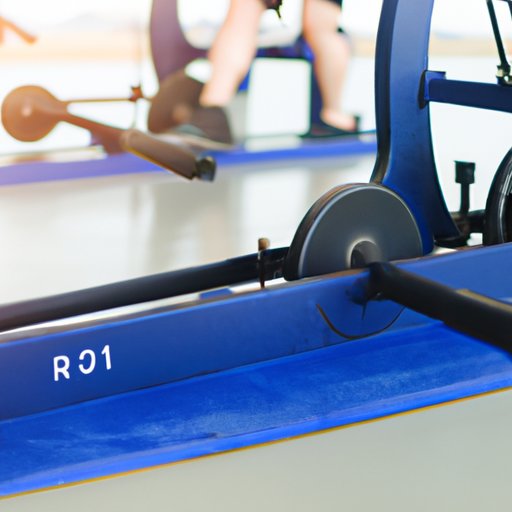Introduction
Rowing is a sport that has been around for centuries. It requires strength, endurance, and technique, making it one of the most intense full-body exercises out there. In this article, we’ll cover the basics of rowing, its health benefits, and the types of training and equipment required to become a skilled rower.
Rowing 101: Understanding the Basics of This Intense Sport
At its core, rowing involves moving a boat through water using oars held by the rower(s). It’s believed to have originated in ancient Egypt and was popularised as a sport in England in the 18th century. Today, there are two types of rowing – sweep rowing and sculling. In sweep rowing, each rower holds one oar, while in sculling, each rower has two oars, one in each hand.
The basic technique of rowing involves four main steps – the catch, the drive, the finish, and the recovery. The catch is the start of the rowing stroke, where the oar enters the water. The drive is the part of the stroke where the rower pushes against the oar and propels the boat forward. The finish is the end of the stroke, where the oar is lifted out of the water. Finally, the recovery is the part of the stroke where the rower prepares to start the catch again.
There are several physical and mental benefits of rowing. It’s a full-body workout that helps to build strength, endurance, and cardiovascular health. It’s also a low-impact exercise, making it ideal for people with joint pain or injuries. Mentally, rowing can reduce stress and improve overall well-being.
The Science of a Row: How the Body Moves During This Full-Body Exercise
Rowing is a highly technical sport that requires specific movements from every part of the body. The legs, core, and back are all heavily involved in the rowing stroke, while the arms are used to move the oars. The biomechanics of rowing can be challenging to master, but once the proper technique is learned, it can result in greater efficiency and speed.
The muscles used in rowing include the legs, back, core, and arms. These muscles are trained through repetition and high-intensity rowing workouts. Common mistakes in rowing technique include leaning too far forward or backward, using the arms too much, and improper foot placement. Training with a professional coach can help to correct these issues and improve rowing efficiency.
From Amateur to Olympian: How to Train for Professional-Level Rowing
Elite rowers train consistently to build the strength, endurance, and technique necessary to compete at the highest level. These training regimens can involve a combination of cardiovascular exercise, strength training, and rowing-specific workouts. Rowers must also have a competitive mindset and focus on improving technique and speed with each practice.
To become a successful rower, it’s important to work on building endurance, both through ongoing cardio exercise and by incorporating longer rowing sessions into a training regimen. Strength training can help to build the muscle groups required for rowing, while improving technique involves focusing on the technical aspects of each part of the rowing stroke. Successful rowers often have a strong support system, including coaches and teammates, and are motivated by personal and competitive goals.
The Benefits of Rowing: Why It’s One of the Best Exercises You Can Do
Rowing provides a range of physical and mental health benefits. On the physical side, it can help to build muscle and increase endurance. It’s also a low-impact exercise that can be done at any age. Mentally, rowing can reduce stress and improve overall well-being.
Quotes from rowers attest to these benefits, with many sharing that rowing has helped them build confidence and improve their overall quality of life. One rower shares, ‘Rowing has helped me become more disciplined, both in my training and my personal life. I feel more self-assured and focused than ever before.’
Rowing Gear 101: Everything You Need to Get Started
Before hitting the water, it’s essential to have the right gear. Boats come in several sizes, from singles for individual rowers to eights for teams, and are made of materials like wood, aluminum, or carbon fibre. Oars also come in a variety of shapes and sizes, with the right oars depending on the type of rowing and the rower’s height and strength.
When choosing gear, it’s important to consider factors like budget and intended use. For beginners, it’s often wise to start with more affordable equipment and build up to more advanced gear over time. Proper maintenance and care are also essential for extending the life of rowing equipment and ensuring optimal performance on the water.
Conclusion
Rowing is a challenging but rewarding sport that offers numerous mental and physical health benefits. Whether looking to build strength, endurance, or overall well-being, it can provide a full-body workout that can be tailored to any fitness level. With the right training regimen and equipment, just about anyone can become a skilled rower.
For those interested in trying the sport for themselves, it’s important to start with the right equipment and work with a coach or trained professional to develop good technique. With dedication and persistence, rowing can be a transformative exercise that improves all aspects of life while providing the thrill of competition and the satisfaction of mastering a highly technical skill.
